Discover the power of Monument Home Loan's refinance loans: lower rates, flexible terms, and financial freedom
Unlock savings and improve your financial future with Monument Home Loan's Refinance Loans
What are refinance loans?

Not sure where to get started? That's okay too, we're happy to meet you where you're at and direct you to the right place or person.
Refinancing at a glance.
- Give your house a complete makeover by renovating the interior, including the bathrooms and kitchen.
- Create a separate living space on your property by building a smaller house for your parents to live in or to rent out.
- Enhance your outdoor space with lasting additions such as trees or a retaining wall.
- Indulge in luxurious upgrades like having a stunning in-ground swimming pool or an outdoor kitchen.
- Managed in-house
Applying for a home has
never been easier
Our quick and secure process takes less than 10 minutes to apply.
Learn more about
refinancing
Lower your payments
There are a number of ways refinancing can lower your monthly payment. These can include refinancing at a lower interest rate, which is especially true now with rates lower than they’ve been in nearly 50 years. Refinancing can also save you money on your monthly payment by providing the opportunity to eliminate your mortgage insurance payment. Depending on your situation, there are other possibilities for lowering your monthly mortgage payment, including lengthening the term of your loan.
Get cash out
One of the most common refinance options is a cash-out refinance, which lets you take out a new loan for more than your current mortgage balance (up to 80-90% of your home equity) and keep the difference in cash. Common uses of cash-out refinance are to consolidate high-interest debt, fund home improvement projects, or simply make cash available for other needs. A cash-out refinance replaces your current mortgage, and you need to have equity built up to take advantage of this type of loan.
Shorten your term
Refinancing at a shorter term is a strategy for shortening the life of your mortgage while potentially saving yourself tens of thousands of dollars in interest. For example, refinancing a 30-year $230,000 loan to a 15-year fixed rate mortgage at 3.75% would save you about $82,000 over the life of the loan! This on top of the fact that you’ll typically be saving even more by refinancing at a lower interest rate. Although a shorter term may mean a higher monthly payment, you’ll be paying more towards your principal each month and therefore building up home equity faster than with a longer term loan.
Refinance steps
Select your lender and apply for a refinance
When you apply for a refinance, you’ll be asked for a lot of the same information you provided when you first got your loan. You’ll need proof of income, assets, credit history, and credit score.
Tip: You don’t need to refinance with your original lender. You can shop around and find one with the lowest rates, highest reviews, and best customer service.
Lock in an interest rate
Once you’ve been approved for a refinance, your lender will ask you if you’d like to lock in your rate. If you’re happy with the current rate, go ahead and lock it. Locks usually last for 15 – 60 days. Rates change daily so if you think the rate will decrease you can always “float” it, meaning you can lock it in once it’s lower. You could also float it if you’re afraid the lock will expire before you’re ready to close.
Underwriting
Once your loan is submitted, the process of underwriting begins. This is when your lender verifies the financial documents you provided to make sure everything is accurate. During a refinance, they’ll also appraise your home’s value, which is really important for a refinance – especially if you’re doing a cash out.
Tip: Respond quickly if your lender requests clarification or additional documentation. Delays might impact your closing date.
Closing
About 30 to 45 days after submitting your paperwork your refinance will close. Be prepared for closing costs to be around $1,500 plus up to 1.5% of your loan amount. You’ll have to sign paperwork, but it should be less than you had to sign for your original home mortgage.
Tip: Weigh the cost to refinance against the amount you’ll be saving. Many homeowners find it only makes sense to refinance if they’ll be staying in their house for at least a few more years. Otherwise, the closing cost of the refinance is more than the monthly savings.
“Our loan officer worked hard and found ways to help us with a very difficult refinance. There were obstacles that they helped us navigate.”
Jolene Y.
Let's get you home.
Our local loan experts will help guide you.


